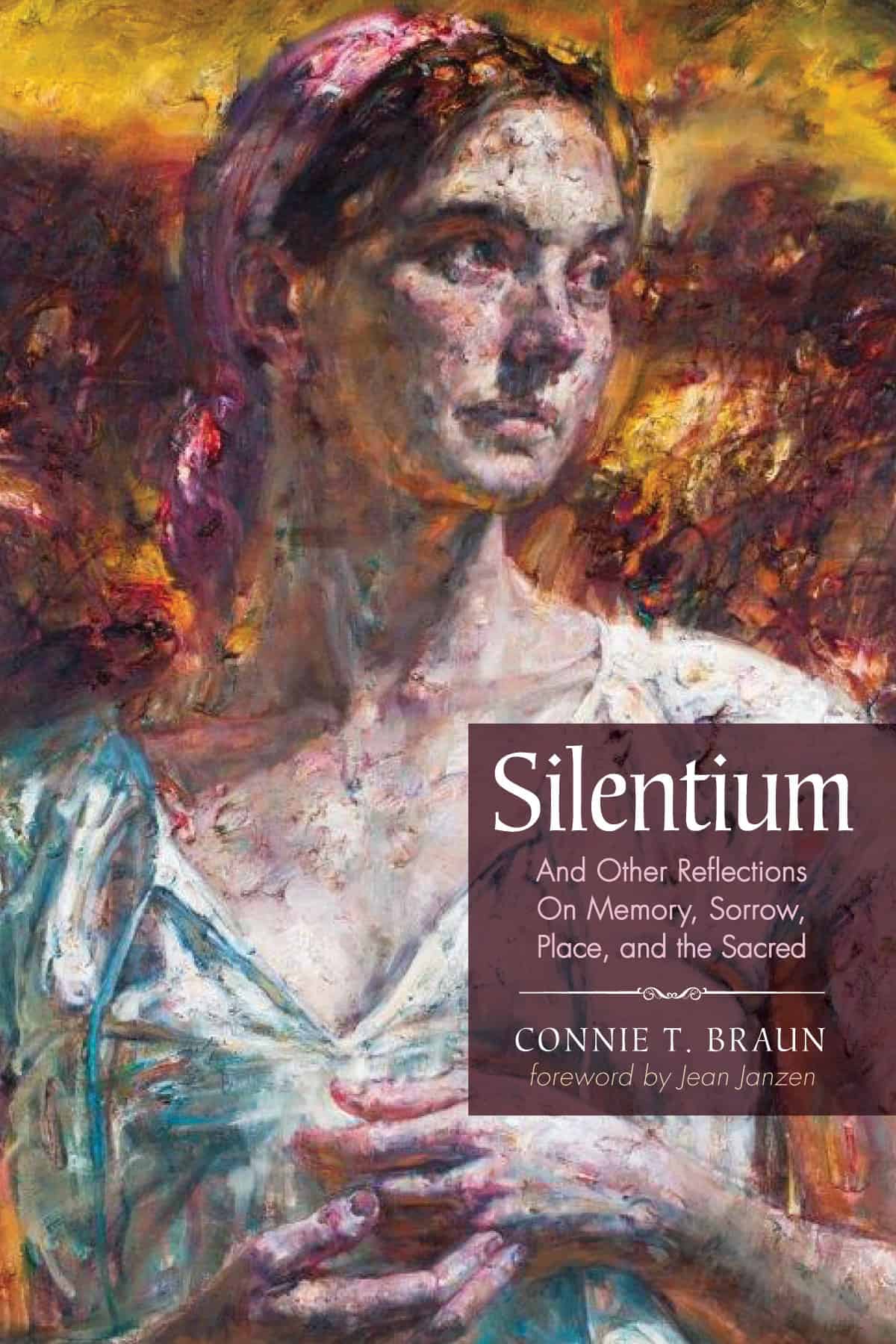
Silentium—Latin, meaning variously silence, being still, keeping silence, noiselessness, stillness, quiet, repose, obscurity. Canadian poet and writer of non-fiction, Connie Braun, meditates on all of these meanings in this rich exploration of her Mennonite family history in Poland, Ukraine, Germany, and Canada. This collection of related essays interspersed with poems, is a look backward that holds profound meaning for our times.
Braun’s retrospection begins with the eighteenth century when her German Mennonite ancestors settled in Polish farm country, while retaining their German religious culture, which would eventually put them in peril of their lives. Silentium in this case refers especially to years of silence, until memories of what happened to the family, particularly in the years surrounding and including World War II, are nearly lost. Braun writes, “Who could talk about the war and the suffering of Mennonites and Germans under the weight of the Jewish experience? Who could talk about life under the Communist regime until the threat of danger to loved ones left behind was past?” Thus, silence reigns until memories are virtually buried for all time, until this writer and other Mennonite scholars begin to dig them out.
German Mennonites were invited to Poland and Ukraine by ruling monarchs because of their farming skills. These immigrants continued to identify as German and felt disconnected from the Polish State that was established after World War I. The Pan-German Movement that preceded and was subsumed by the Third Reich reinforced their otherness in both countries and government repressions were directed at them, including book burning, closing of institutions, beatings and killings followed by mass burials. Hoping for reprieve, some joined Nazi organizations and obtained relief under occupation. After the war, however, reprisals began again, and included incarceration in concentration camps, dispossession of land, removal to Germany, and desecration of graves with German surnames, among other forms of revenge.
Braun is unflinching, though deeply pained, in her willingness to examine how Mennonite communities, and even members of her extended family, colluded with the Nazi occupiers. Mennonites are known for their pacifism, but the author writes, “…the consequences of identifying with the German language and culture, and rising Nazism, would prove to cast a dark heaviness over the Mennonites who had, for centuries, lived in Poland.” She mentions that Elie Wiesel described the Holocaust as a singular event and acknowledges the importance of addressing its uniqueness. At the same time, she feels it is essential to examine her family experience during that time period. She writes, “If the stories are separate, they are horribly tangled.”
Before, during and after my own writing of the biography of Holocaust survivor Viktor Frankl, I read and researched a great deal of literature covering that time period. So I was surprised to discover a body of related knowledge that I had not encountered before—namely how ethnic Germans, and particularly Mennonites, in Ukraine and Poland were treated before, during and after World War II. As I have been so many times, I was struck by the immensity of the destruction we humans are capable of wreaking upon one another. Our capacity for cruelty and harm appears to be indiscriminate.
As I have been so many times, I was struck by the immensity of the destruction we humans are capable of wreaking upon one another. Our capacity for cruelty and harm appears to be indiscriminate.
Perhaps this was most clear in the essay titled “Gathered Fragments: 1944-1948,” which takes phrases from Ecclesiastes 3 as subheadings to describe what happened to Braun’s mother and her mother’s siblings and parents following the war. In the scripture passage, the times are paired as opposites–for example, “a time to mourn” with “a time to dance.” In Silentium, it was often ambiguous as to which times applied to whom. For example, under the heading, “a time to cast away stones, and a time to gather stones together,” is it the German family or their Polish neighbors who are casting or gathering? I interpreted the ambiguity as intentional, as saying these things happened, and still happen today, on all sides. Human cruelty to one another and human graciousness.
One essay in the book is titled “Pilgrimage,” which Braun describes as “a journey to a place of connection to the sacred.” In various essays she recounts three pilgrimages to the places of her family’s origin, and in reality, the entire book represents a pilgrimage, a spiritual learning through the events of familial past. Readers who join her on this pilgrimage will encounter a powerful lesson for our time regarding the dangers of merging religion and ethnicity with nationalism. Of a visit to Poland in 2013, she writes, “…if the land and the traces of the people here teach me one thing, it is this: religious and sacred are not the same, that is, when religious identity merges with national identity. Germany of the 1930s embraced an identity that conflated Christianity with the idea of a German Volk and Aryan race.”
In a collection of essays I often find myself coming to one essay and thinking, “This is my favorite.” In Silentium, I would think that, and then I would read the next essay and have to revise my opinion. There were three that spoke to me in lasting ways. The first was “Gathered Fragments,” which I loved for its depth of understanding of the human condition and its Biblical references. As Braun points out, tradition tells us that Solomon penned Ecclesiastes when he was old and had observed “the worst of humanity alongside the good.”
The very next essay, “Crochet,” quickly became my new favorite. Throughout the book, women’s courage, stamina, and love shine brightly. And then there are the essays that especially speak of women’s strong part in Mennonite culture, past and present, “Crochet” being one of them. Crochet offers an extended metaphor for how a family and faith hold together through overwhelming rips in the fabric of their lives. This textile art is also used to describe the many processes of memory: “…a dropped stitch in story can be deliberate, and does not necessarily cause the material to deteriorate. Memories of the past fade. For some, traumatic memories get blocked.”
“…a dropped stitch in story can be deliberate, and does not necessarily cause the material to deteriorate.”
“Oral History (or, food-ways),” not surprisingly became my ultimate favorite, speaking as it does of how foods play “a key role in creating a community identity.” Here Braun weaves back and forth among mouth-watering descriptions of traditional Mennonite and Polish meals, how communities nourish themselves, women’s function in creating identity, and the meaning of identity—all topics that drew me in and left me feeling filled.
Several of the essays in Silentium were previously published or presented at literary conferences. Because each stands as a self-contained work related to the others through history and theme, there is necessarily repetition. The repetition of events sometimes caused me some confusion regarding chronology, and I found myself at points wishing for a timeline. Yet the deep and stark lessons for our time, the thread of the sacred, and the lyrical beauty of Connie Braun’s writing far transcended my need for any linearity. Besides the actual poems, Silentium offers gorgeous prose poetry throughout—sufficient to delight this lover of language.
Anna Redsand is the author of a spiritual memoir, To Drink from the Silver Cup: From Faith Through Exile and Beyond and of the biography, Viktor Frankl: A Life Worth Living, about Holocaust survivor and author of Man’s Search for Meaning, as well as a number of essays.

